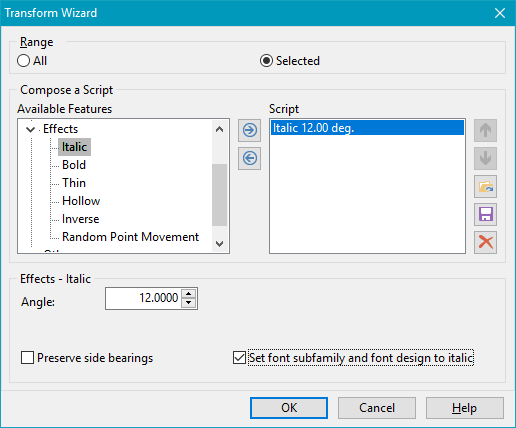Well, in this case, I only really have two books for source material that made use of this 16th century font (that I’ve been able to find, anyway), and only one of those two was really useful for gleaning characters from – the other one is okay, too, but it has much fewer sentences in that font, and nothing that isn’t already found in the one “main” book I’ve been using.
I have been able to glean the entire lowercase set for both the regular and italic, but I’m missing a bunch of the uppercase glyphs – unless I can find another source from the same printer, using the same font, and which does have those characters, then I’m going to have to fake those uppercase characters. Kind-of a bummer to not have those be “authentic,” but hopefully I’ll be able to pull off something that at least looks right.
and some existed in a form which wouldn’t be recognised by someone familiar with todays alphabet. > 
Actually, now that you mention it, I was going to post this as another thread here (and I may still do that, if only to draw better attention to it – and since I’m not getting off-topic to my original post here), but there are a couple characters that have me utterly stumped as to what they are, and/or what they mean.
Check out this screenshot…

There’s two odd things in there. In the first line, the second-last word looks like “umbenib9” (where the “9” is superscript). That only seems to occur once in this book, and I also encountered it in another (third) book by this same printer, in an entirely different font (that my blackletter “Wickednesse” font is based on), where it also appeared only once. I thought it was some sort of printing error or something, but now I’m thinking that it was intentional, and does have some sort of meaning – in both cases that it appeared it was in the context of a bit of Latin text.
The second odd thing there is in the second line, also the second-last word. What’s that last character? Is that a “qz” ligature? Here’s one other instance from that same book where that character/ligature appears…

I know hardly anything about Latin – just a teeny bit – never mind historical Latin. I can’t see any practical purpose for creating special glyphs (in my PUA) for those two things, as I doubt modern users of my font would ever have any use for them (that superscript “9” could be easily faked as exactly that, of course), but if for no other reason than to satisfy my curiosity it would be nice to know what they actually mean, of course.
Any ideas, perchance?
![]()




